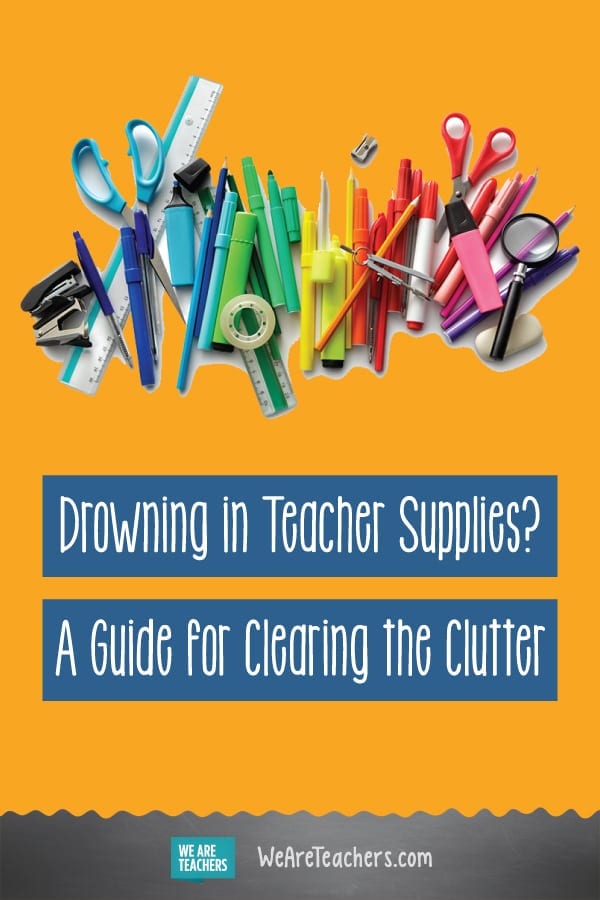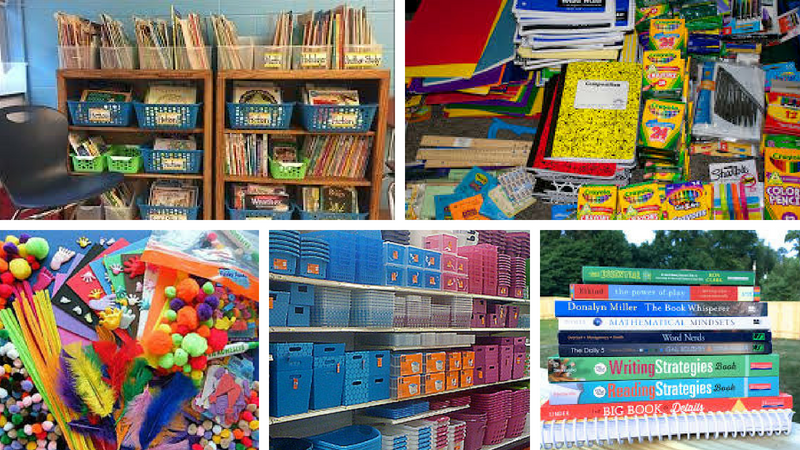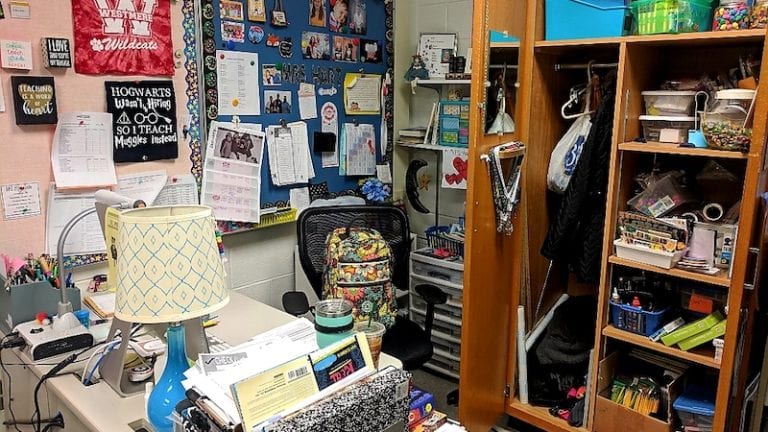Sarah W., who has taught for seven years, didn’t realize just how much stuff she had accumulated in her classroom until she had to pack it all up and move it out over the summer while her building was under construction. As she sorted through her books, classroom supplies, and professional materials, she realized she really only used a portion of the teacher stuff that was taking up so much space.
So what do you do when you have perfectly good resources that you just don’t need anymore? It’s less than gratifying to see your carefully curated collection driven away in the back of a truck headed for who knows where. Most teachers would rather find a real home for the valuable resources they have carefully handpicked for their classroom.
Here are a few ideas to help you de-clutter your professional space and at the same time share the wealth with a teacher who needs more.
1. Organize a swap meet in your building.
During the last few workdays of the year, have all the teachers put any extra materials they don’t need in the hall. You never know when the teacher down the hall might have just what you’re looking for, or vice versa. Have a few volunteers lined up to transport the leftovers to a local charity, such as the Salvation Army, on the last day. Or better yet, schedule a pickup for that day.
2. Donate to a university or teacher training program.
If you live near a university or college that has a teacher training program, contact the main office and inquire about being paired with new teachers who may be interested in your surplus. New teachers will particularly appreciate all those costly professional books and training materials you have taking up space on your shelves.
3. Contact your district office.
Call your local or neighboring school districts to see if there is a particular school in need or one with a particularly large amount of new teachers that could use your resources.
4. Post a notice on your community Facebook board.
If your neighborhood or town has a private Facebook group, offer up your excess supply. List out what you have up for grabs, and more than likely you will hear back from many interested parties.
5. Take it all home and have a garage sale.
When it comes to stocking their classrooms, I know few teachers that can resist a good bargain. See if a few of your teacher friends want to team up for a garage sale. Advertise the event in your local paper as a teacher supplies sale and list the most lucrative items that will attract buyers.
6. Donate to Head Start or other programs for underprivileged children.
Contact your local Head Start coordinator and see if they need any of the materials you have. Oftentimes teachers need specific supplies for special projects.
7. Connect with local preschools.
Contact preschools in your neighborhood to see if they have a need for anything you have to offer. Most programs would appreciate any kind of building materials, books, or math manipulatives.
8. Scope out vacation Bible schools.
Many churches hold vacation Bible school in the summer, and crafts are a big part of the schedule. If you have extra supplies, such as crayons, paints, paper, scissors, glue, or anything else crafty, call the church’s main office and see if they can connect you with the VBS coordinator.
9. Tap into your social network.
Put the word out on your social media. Chances are you have friends or acquaintances who know of someone just starting out in their teaching career who would love to jumpstart their classroom inventory.
10. Research local opportunities.
Some communities have organizations that redistribute teaching supplies. In Denver, Colorado, an organization called RAFT (Resource Area for Teachers) gathers unwanted items from local businesses and individuals and upcycles them into interesting and unique learning activities. In addition to diverting thousands of cubic feet of waste from landfills in Colorado, they support educators by providing cheap (and sometimes free) hands-on learning opportunities for their students.
Another Denver organization, ReCreative, also diverts materials that are destined for landfills by collecting and redistributing them to people who can use the materials for education, art, and inspiration.
And in Charlotte, North Carolina, Classroom Central‘s mission is to equip students living in poverty to effectively learn by collecting and distributing free materials, including school supplies, craft items, K–12 reading books, and STEM instructional items.
11. Connect with teachers on DonorsChoose.org or GoFundMe.
Lots of new teachers set up campaigns to raise money to stock their classrooms. Scroll through the profiles and message teachers you are interested in to see if they could use your excess resources
For more ideas, read Where to Donate School Supplies/Office Supplies? 15 Options …
Have you successfully cleared out your teacher stuff? Share your best tips with us on our WeAreTeachers HELPLINE.
And for those of you who are perfectly happy with your abundance of teacher stuff, check out 25 pictures of teacher organization perfection that will make you drool.


